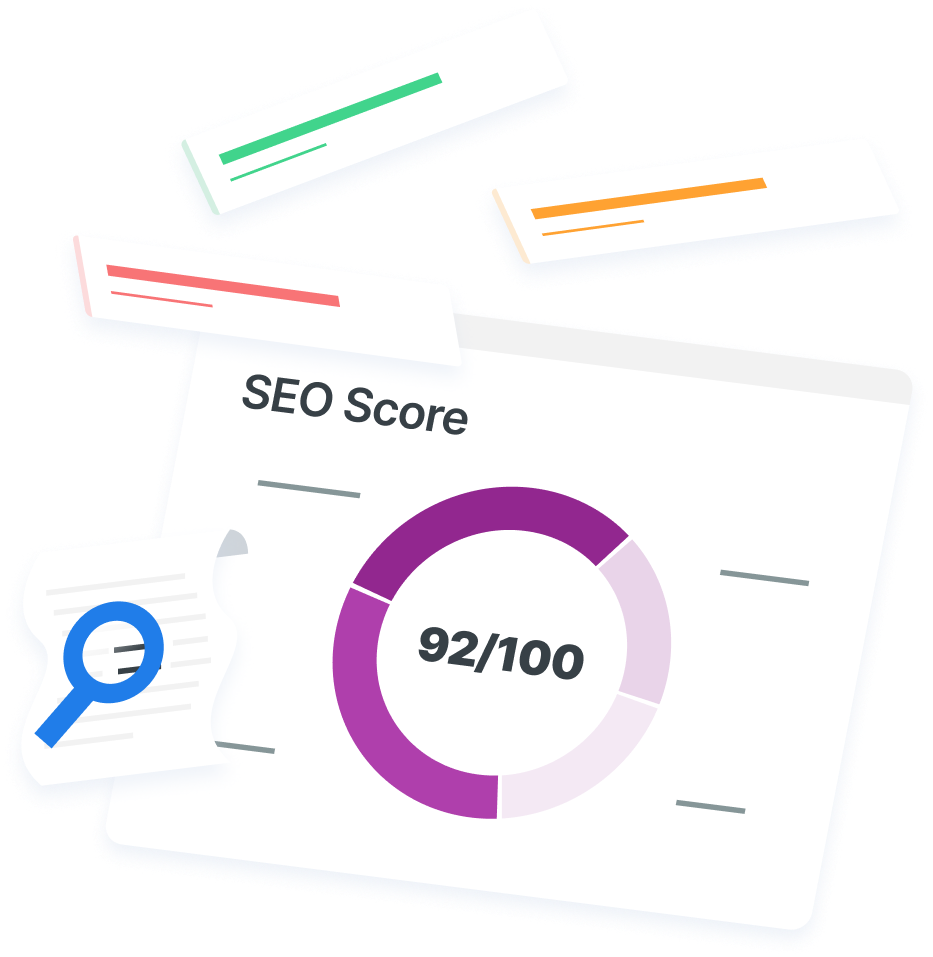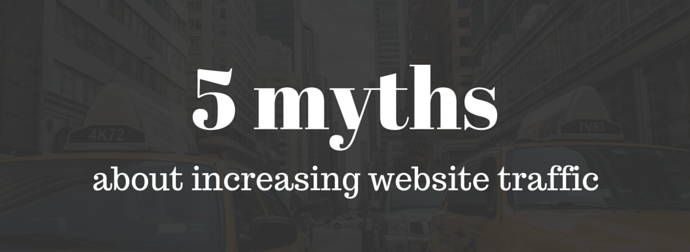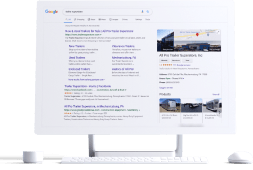-
 6 min. read
6 min. read
-
 Trevin Shirey
Trevin Shirey VP of Marketing
VP of Marketing
- Trevin serves as the VP of Marketing at WebFX. He has worked on over 450 marketing campaigns and has been building websites for over 25 years. His work has been featured by Search Engine Land, USA Today, Fast Company and Inc.
If you own or manage a website, you know that there are a few key metrics that indicate success. And regardless of your industry or company goals, one metric is universal: traffic.
The number of daily or monthly visitors your site receives is easy to measure, monitor, and report. It provides a simple way to look at your site’s growth over time, and can give you an idea of whether your online marketing efforts are working – right?
Not necessarily.
Website traffic is a simple metric on the surface, but unfortunately, there’s a little more to it than just counting visitors. Today, I’ll clear up a few common misconceptions about measuring and increasing website traffic.
#1 – Traffic is the most important metric for your site
Perhaps the most common myth of all, many site owners believe that traffic is the most important metric for their website. However, the success of a site is based on much more than simply attracting a certain number of people.
Instead of just looking at how many people come to your site, you need to take what they do when they get there into consideration.
If the majority of your visitors view one page and immediately return to where they came from, or “bounce,” they aren’t doing anything for your business.
So, let’s say you log into your Google Analytics account and take a look at your pageviews for the month:
If you’re happy with the numbers, that’s great! But just below this graph, you’ll see a few numbers that are much more important:
Many of your visitors will inevitably bounce, but by improving the calls to action on your pages, you can lower your bounce rate. Provide each visitor with a logical next step once they’ve finished reading your content, and they’ll be more likely to stay.
That may be as simple as suggesting further reading or linking to a contact page.
By giving visitors a next step, you can improve your conversion rate, or the percentage of visitors who take steps towards becoming customers.
That’s a much more important metric than traffic, since it measures the people who are interested – not simply present.
#2 – All traffic is equal
More site traffic means more leads, sales, and revenue, right? Sometimes – but not all traffic is the same.
I mentioned in the previous section that site owners should focus more on metrics like bounce and conversion rates than traffic. However, it’s significant to note that some visitors just won’t convert, regardless of how great your calls to action may be.
These disinterested visitors can be considered unqualified traffic – that is, they have no interest in your products or services, and are unlikely to become customers at any point.
On the other hand, some of your site visitors can (hopefully!) be considered qualified traffic.
These visitors are much more valuable to your business, and you should focus your marketing efforts on attracting them.
So how can you generate more qualified traffic for your site? There are many answers to this question, but I recommend a combination of SEO, PPC, and content marketing. These inbound methods all allow you to target your efforts directly to your marketing personas, and can greatly increase the amount of qualified traffic your site receives.
#3 – It will increase instantly with SEO
One of the biggest benefits of search engine optimization, or SEO, is that it can increase site traffic.
This is one of the main reasons that people invest in it, and it certainly works.
That being said, seeing results from even the best SEO strategy takes time. Many people who do not have experience in the field mistakenly believe that their traffic will increase overnight once they implement an SEO strategy, and as wonderful as that would be, it just doesn’t happen.
The effects of an SEO plan can take four to six months to become noticeable, and even then, the results aren’t typically earth-shattering right off the bat. High rankings for your site can take a while to achieve.
And while that may sound frustrating if you’re new to SEO, it also means that once you’ve reached top spots for certain keywords, your competitors will have a lot of work to do if they want to take them from you.
#4 – Organic traffic is superior to paid traffic
For some reason, some site owners believe that organic traffic from search engines is better than traffic from paid sources. And while organic traffic is certainly great because it means that people are actively searching for your products or services, it isn’t inherently better than any other kind.
In fact, paid traffic can work wonders – especially for new sites. Like I mentioned above, organic growth is slow.
Pay-per-click advertising, or PPC, on the other hand, can show along search results almost instantly. This means even if your business and site are relatively unknown, you can start attracting visitors.
With tools like Google Ads, you can target your ads directly to people that you believe would be qualified leads. Not only that, but you can also send them straight to the exact landing pages you want them to see.
And while these ads may cost more initially than doing SEO, the benefits may make them worth your while.
#5 – Increasing site traffic is free
Most marketers are aware that Internet marketing is more cost-effective than traditional methods. That being said, “cost-effective,” isn’t the same thing as, “free.”
The price of PPC ads is relatively simple to understand, but even if you focus your efforts on SEO and content, there are still costs associated. Even if you do everything yourself and don’t have to write a check to an agency or employee for their work on your site, you’re still investing a very valuable asset: your time.
Learning about, keeping up with, and putting Internet marketing into practice can be a time-consuming endeavor, and constantly creating content isn’t exactly quick and easy, either.
If you are serious about increasing your site’s traffic, you need to be willing to either make that time commitment, or hire someone else to do it for you.
Getting qualified traffic to your site is a challenging process, but can have a huge impact on your Internet marketing success.
-
 Trevin serves as the VP of Marketing at WebFX. He has worked on over 450 marketing campaigns and has been building websites for over 25 years. His work has been featured by Search Engine Land, USA Today, Fast Company and Inc.
Trevin serves as the VP of Marketing at WebFX. He has worked on over 450 marketing campaigns and has been building websites for over 25 years. His work has been featured by Search Engine Land, USA Today, Fast Company and Inc. -

WebFX is a full-service marketing agency with 1,100+ client reviews and a 4.9-star rating on Clutch! Find out how our expert team and revenue-accelerating tech can drive results for you! Learn more
Try our free SEO Checker
Boost your site’s search performance with our free SEO Checker. Analyze your website for optimization tips on titles, headers, content, speed, and more. Get a free report now to enhance rankings on Google, Bing, Yahoo, and beyond!



How Is Your Website’s SEO?
Use our free tool to get your score calculated in under 60 seconds.
Try our free SEO Checker
Boost your site’s search performance with our free SEO Checker. Analyze your website for optimization tips on titles, headers, content, speed, and more. Get a free report now to enhance rankings on Google, Bing, Yahoo, and beyond!









